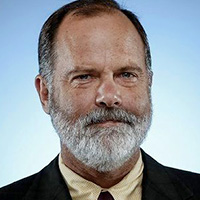Is inequality inevitable?
In one sense, the answer is clearly yes. As Lee E. Ohanian has emphasized in his provocative research, all societies feature some stratification. In fact, some inequality is probably desirable. It creates incentives to work, save and invent; prosperity is the reward for those who do, poverty the punishment for those who do not.
But not all inequality is natural or inevitable. The period following the end of World War II stands out in American history as one of economic growth but also of shared prosperity. The rich got richer and the poor got richer, but the poor got richer faster. American inequality shrunk; the middle class grew. Many factors contributed to this, not least a federal income tax system that would be regarded as confiscatory in today’s flintier Washington. A single filer earning more than $200,000 a year in the 1950s paid a 91% marginal tax rate (the threshold was $400,000 for married couples filing jointly). The lawmaker who proposed going back to such a tax today would find himself in a Tea Party tempest.
Instead, many policy makers have resigned themselves to persistent inequality and an ever-widening gap between the richest and poorest Americans. Much of the work in this issue of Blueprint examines the scope of that trend, as well as its causes and effects. Leading this effort is Chris Tilly, who has shown with study after study that income disparities are growing across the spectrum, so the 1% are pulling away from the 99%, but the .5% also are pulling away from the 1%, and the bottom is falling farther behind. One cause: the decline of organized labor, which once was a powerful force for higher wages and workplace safety.
Inequality comes at a cost. The poor suffer greater health problems. For proof, consider the work of Linda Rosenstock and Ninez Ponce, who have demonstrated a connection between poverty and health issues, including premature births. At the same time, poorer children attend schools with inferior facilities and have their classes more frequently interrupted — findings that John Rogers has presented with remarkable clarity. In a society dedicated to the principle that all people should have an equal chance for success, America’s poor are routinely denied that chance.
These are not abstractions. They are real problems, and they are particularly acute in Southern California. In 2015, Los Angeles Mayor Eric Garcetti, responding to the persistence of poverty and inequality, championed the creation of a municipal minimum wage. It goes into effect in January and will gradually increase over the next few years until it reaches $15 an hour. That will provide some relief for the city’s more than 500,000 minimum-wage earners, but it will hardly end inequality in Los Angeles, much less the nation.
The poor may always be with us, and honest people can disagree about whether narrowing inequality should rank above or below promoting general economic growth.
What research confirms, however, is that policy, not nature, shapes the contours of inequality. Policy makers, take note.























